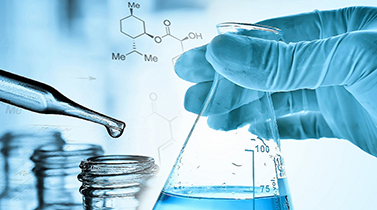

Soda lime (soda lime) glass is a kind of soft glass and […]
Soda lime (soda lime) glass is a kind of soft glass and should not be used in the laboratory, because this kind of glass is not able to withstand temperature and pressure changes like borosilicate glass, and it should not be sterilized in an autoclave at high temperatures. Most bottles are made of soda lime glass. When discussing borosilicate glass in this article, do not confuse it with the destruction of soda lime glass during cleaning or autoclaving.
Disposal of new glass instruments
New glass instruments are usually a little alkaline. After checking the tightness and cracks of the glass instruments, wash them with warm soapy water, and then soak them in 1% hydrochloric acid or nitric acid solution for a short time, and then clean the glass instruments again. Rinse thoroughly with distilled water.
Why glass instruments are broken
Laboratory glass breaks during normal use, usually as a result of debris, abrasion, or scratches, or due to rapid temperature or pressure changes with the glass itself. Once you get your laboratory glassware, please check it carefully before using it, and hold the glassware under natural light to observe whether there are fragments, cracks or cracks. Even very small cracks can cause glass to break under high temperature or high pressure.
The bumpy glass instrument is close to any object (such as other glass instruments, poolside, tableside, etc.), so as to avoid small bursts or cracks caused by glass instruments.
Do not immerse glass instruments in strong alkali solution for a long time to avoid damage to glass instruments.
Tips for cleaning glass instruments
Laboratory glass instruments should not have chemical and grease residues. According to experimental needs, glass instruments may need to be disinfected. Here are some tips for cleaning:
Use a soft brush for cleaning to avoid unnecessary bursts.
Never use hydrofluoric acid to clean glass instruments. In other occasions, hydrofluoric acid is used as a rust remover, metal cleaner, glass etchant and metal coating compound, which is a highly corrosive compound.
Never use strong acids or alkalis to clean glass instruments.
Standard borosilicate glass can be sterilized by autoclaving. If you want to autoclave and sterilize glass instruments, the exhaust channel of the autoclave should be smooth and let it cool slowly. Generally, autoclave to 230-240 degrees. It can be autoclaved at a temperature of 400 degrees in a short time (for very special applications).
Ashing glass will shorten the service life of your glass instrument in a mechanical furnace with a temperature of more than 500 degrees for a long time.
In order to determine whether the glass container is completely wettable (especially important for accurate liquid measurement), it was confirmed that distilled water can wet all surfaces equally.
Clean the glassware immediately after removing all residues. If it cannot be cleaned immediately, soak it.
Never use wire brushes to clean glass instruments.
Always rinse unused glassware with water and then soak in distilled water. Boil in a weak sodium carbonate solution to remove grease from the glass, or use acetone to remove it, and then rinse with water.
For glass instruments, ultrasonic cleaning is also a good choice, especially when combined with mild cleaning agent heating.
Drying of glassware
It is a good choice to dry the instrument on a stove at 100 degrees, and drying is also a good way.
Steam autoclave sterilization of glass instruments
Autoclave the borosilicate glass instrument at 100-120 degrees for 15-20 minutes. When sterilizing at high temperature, try to remove the seal ring, clip and buckle. If it is impossible to remove these things, at least they should be loosened or unscrewed to avoid pressure explosion .
